Abstract
Studies were conducted to determine the uptake and metabolism of the pigment synthesis inhibiting herbicide clomazone in tolerant-soybean (Glycine max [L.] Merr. cv Corsoy) and susceptible-cotton (Gossypium hirsutum [L.] cv Stoneville 825) photomixotrophic cell suspensions. Soybean and cotton on a whole plant level are tolerant and susceptible to clomazone, respectively. Preliminary studies indicated that I50 values for growth, chlorophyll (Chl), β-carotene, and lutein were, respectively, >22, 14, 19, and 23 times greater for the soybean cell line (SB-M) 8 days after treatment (DAT) compared to the cotton cell line (COT-M) 16 DAT. Differences in [14C]clomazone uptake cannot account for selectivity since there were significantly greater levels of clomazone absorbed by the SB-M cells compared to the COT-M cells for each treatment. The percentage of absorbed clomazone converted to more polar metabolite(s) was significantly greater by the SB-M cells relative to COT-M cells at 6 and 24 hours after treatment, however, only small differences existed between the cell lines by 48 hours after treatment. Nearly identical levels of parental clomazone was recovered from both cell lines for all treatments. A pooled metabolite fraction isolated from SB-M cells had no effect on the leaf pigment content of susceptible velvetleaf (Abutilon theophrasti Medic.) or soybean seedlings. Conversely, a pooled metabolite fraction from COT-M cells reduced the leaf Chl content of velvetleaf. Soybean tolerance to clomazone appears to be due to differential metabolism (bioactivation) and/or differences at the site of action.
Full text
PDF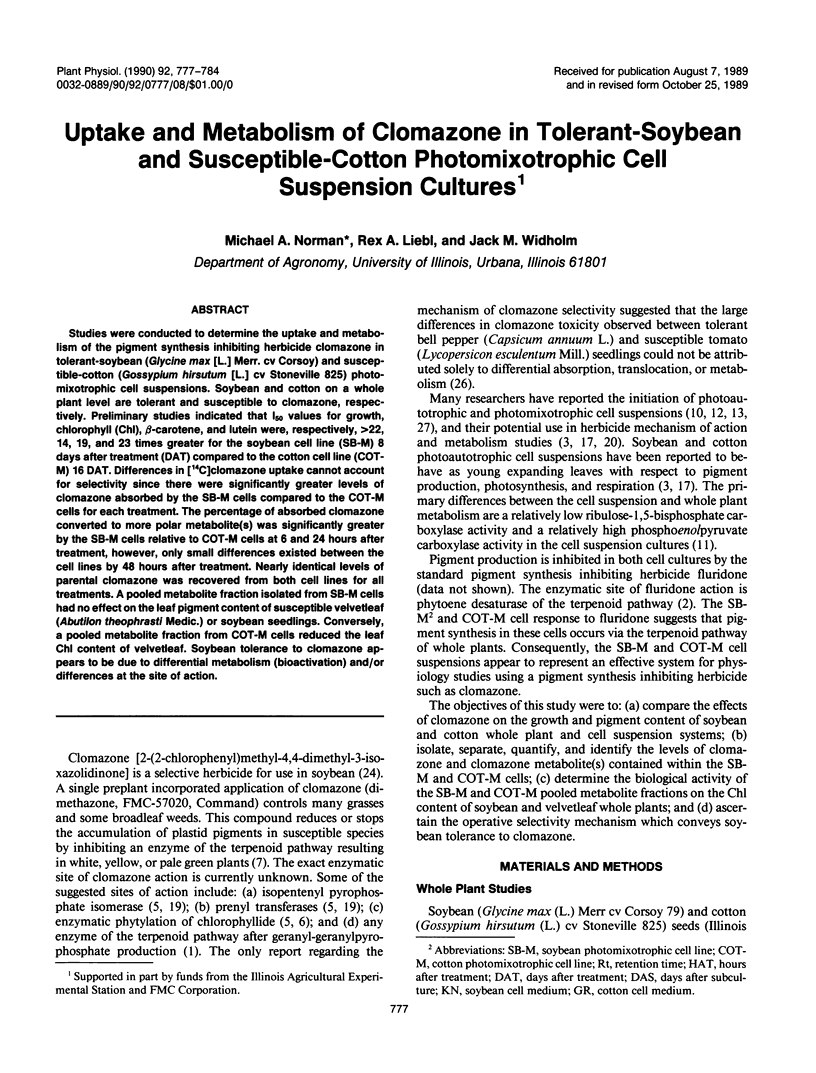
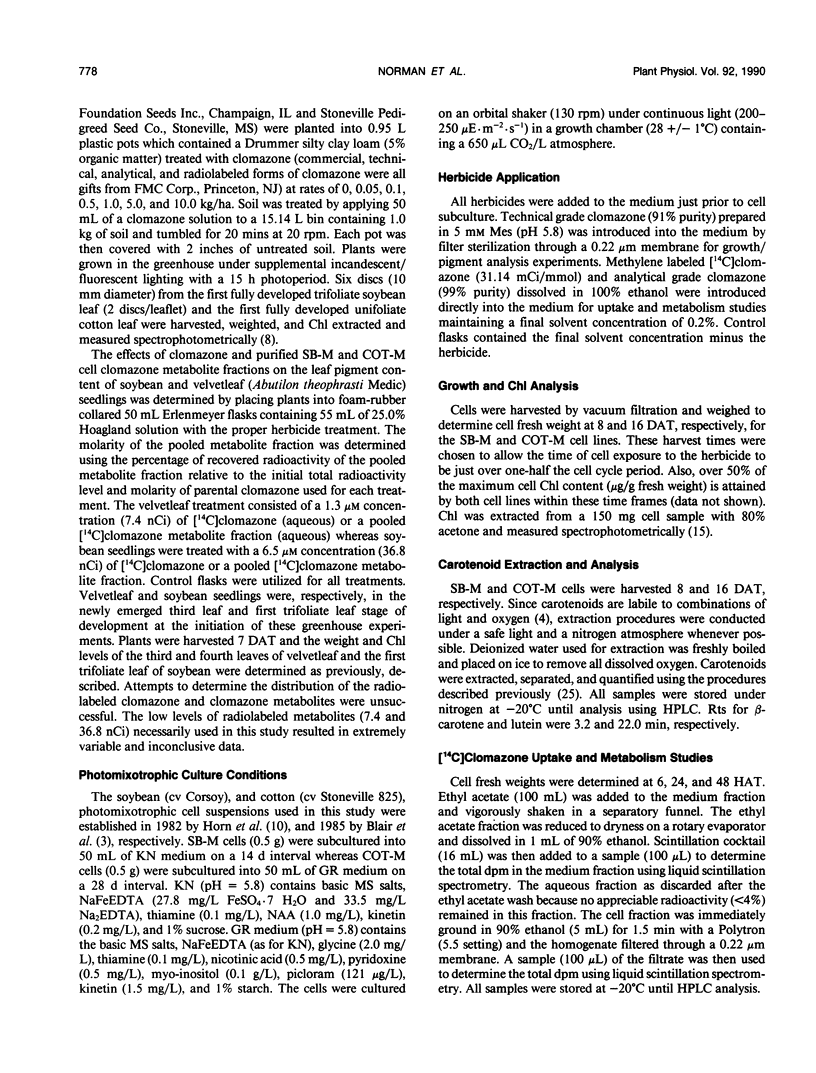
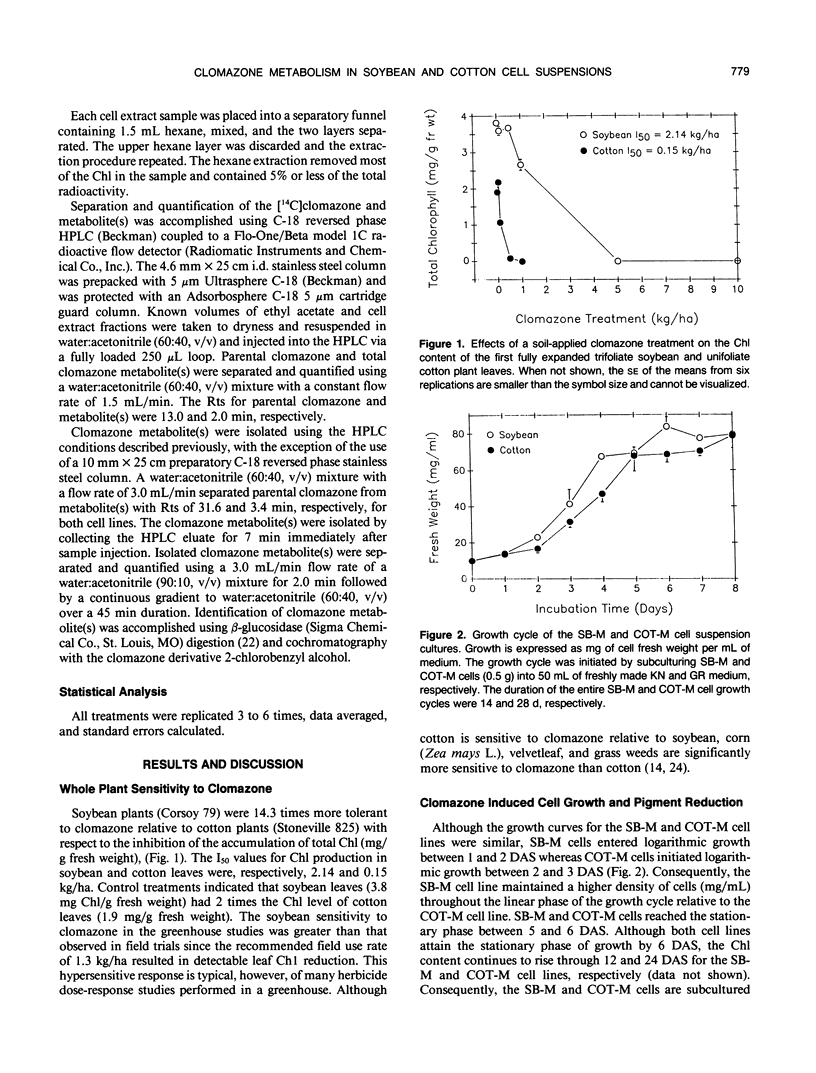
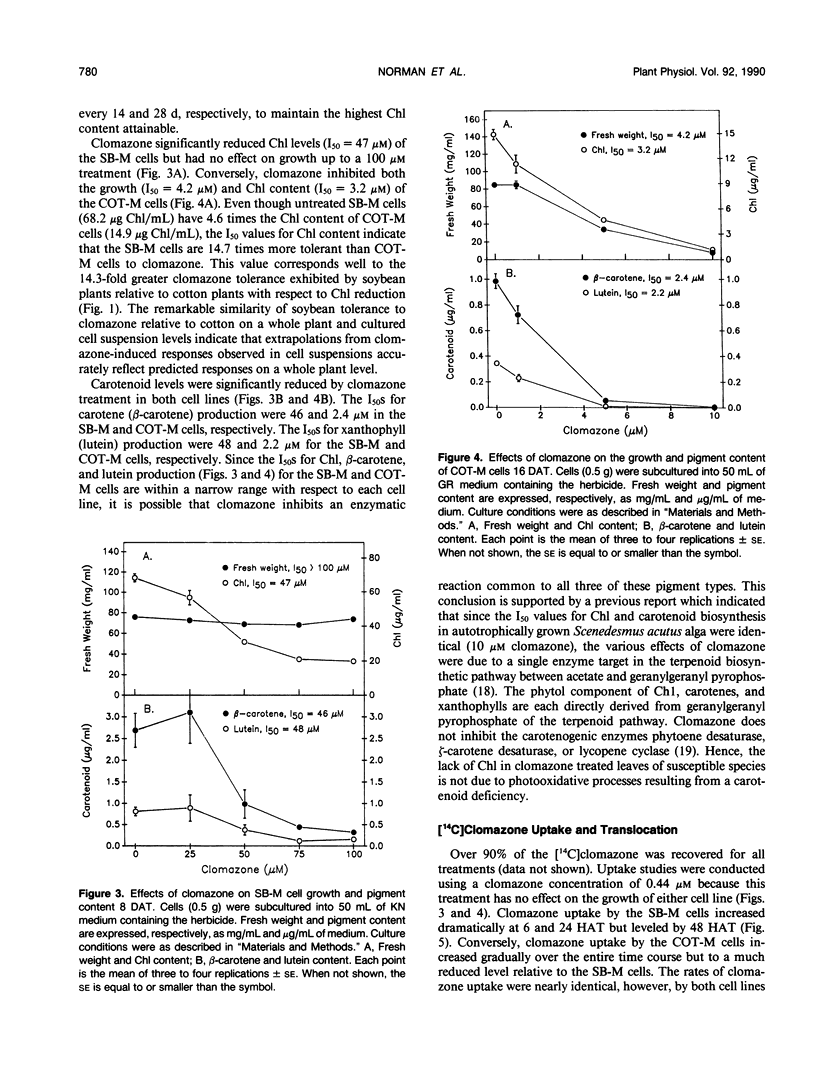
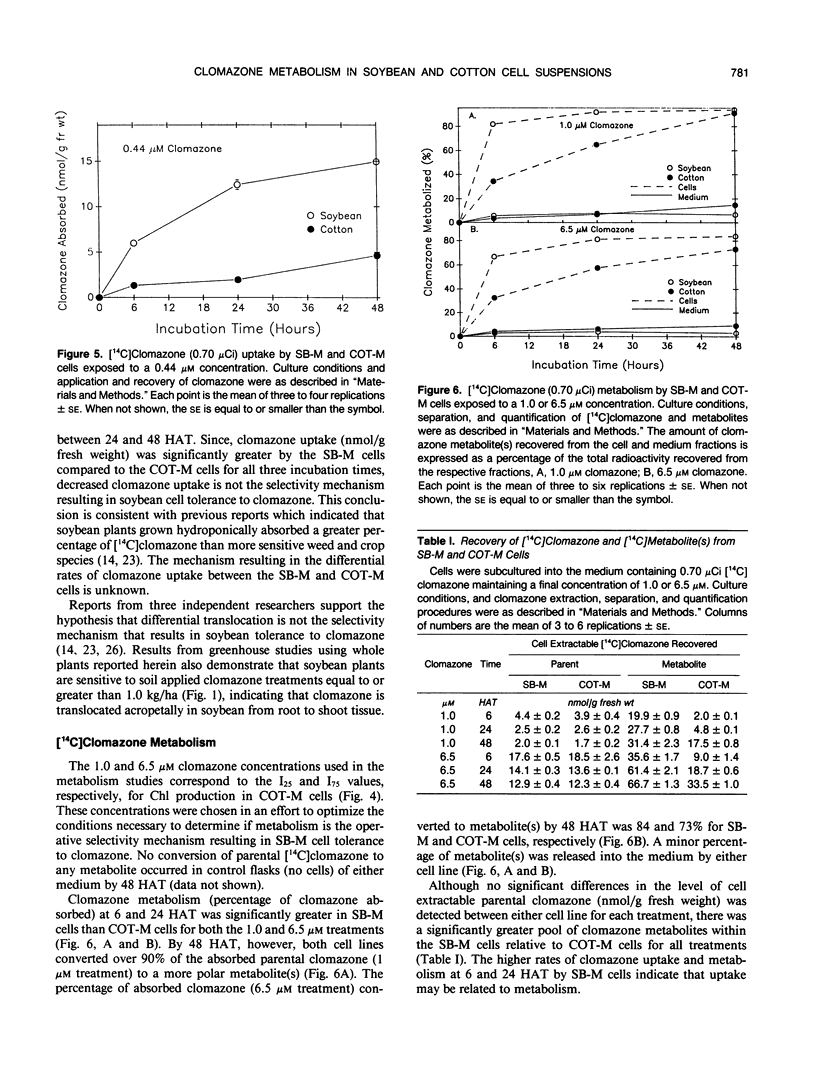
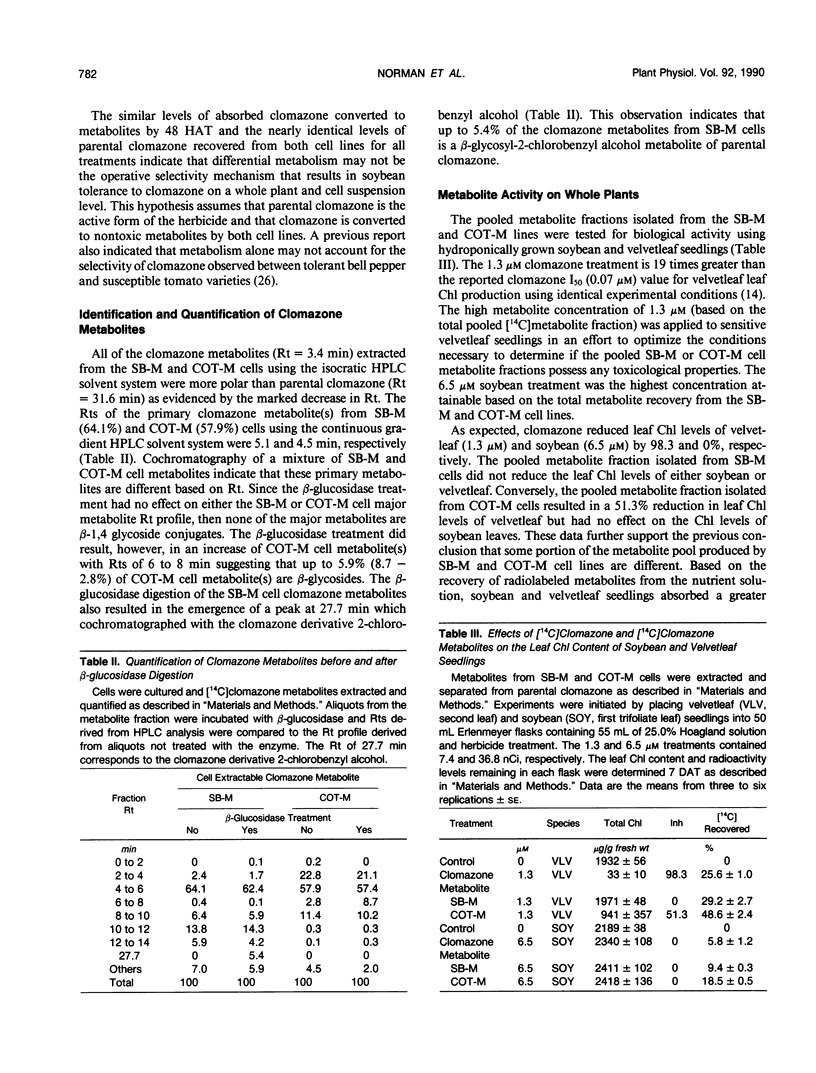
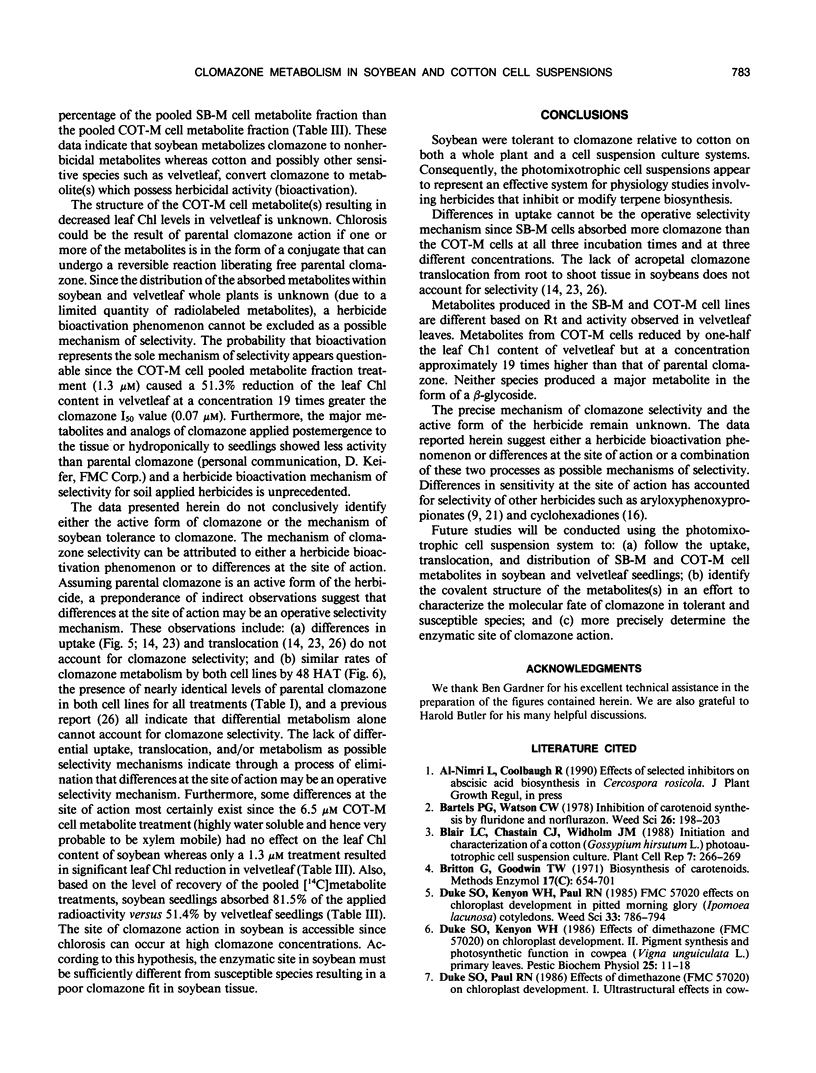
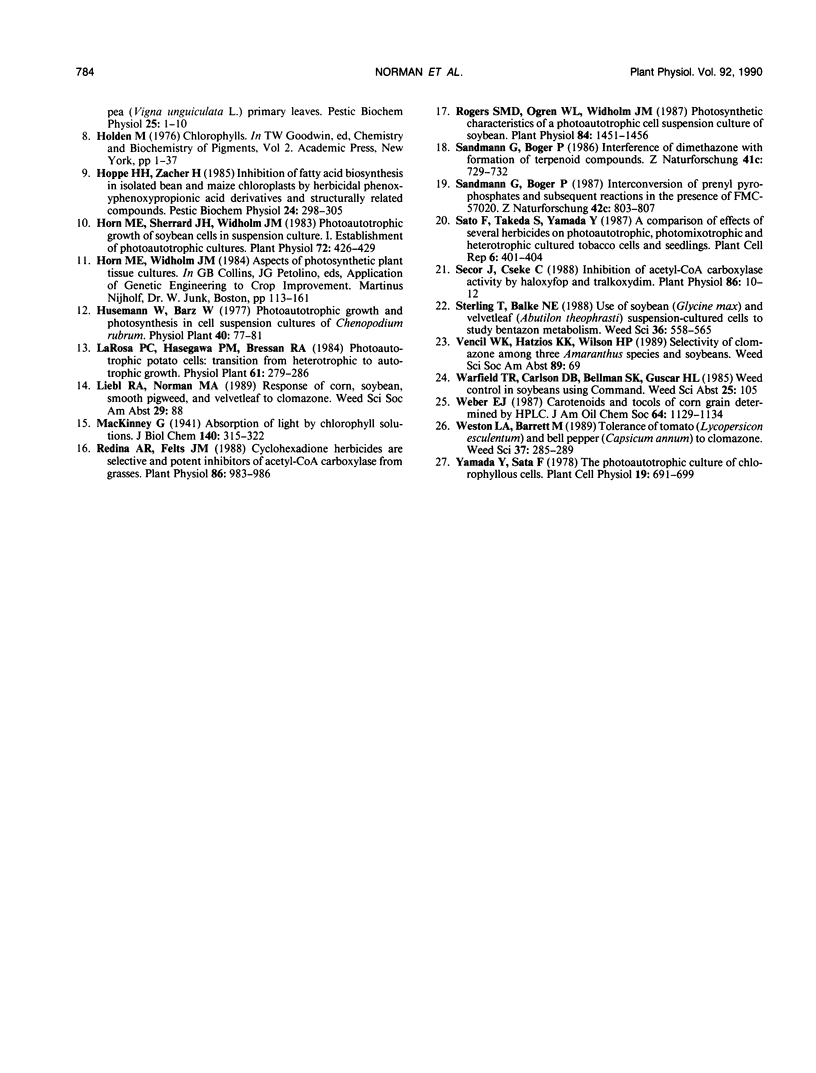
Selected References
These references are in PubMed. This may not be the complete list of references from this article.
- Horn M. E., Sherrard J. H., Widholm J. M. Photoautotrophic growth of soybean cells in suspension culture: I. Establishment of photoautotrophic cultures. Plant Physiol. 1983 Jun;72(2):426–429. doi: 10.1104/pp.72.2.426. [DOI] [PMC free article] [PubMed] [Google Scholar]
- Rendina A. R., Felts J. M. Cyclohexanedione Herbicides Are Selective and Potent Inhibitors of Acetyl-CoA Carboxylase from Grasses. Plant Physiol. 1988 Apr;86(4):983–986. doi: 10.1104/pp.86.4.983. [DOI] [PMC free article] [PubMed] [Google Scholar]
- Rogers S. M., Ogren W. L., Widholm J. M. Photosynthetic characteristics of a photoautotrophic cell suspension culture of soybean. Plant Physiol. 1987 Aug;84(4):1451–1456. doi: 10.1104/pp.84.4.1451. [DOI] [PMC free article] [PubMed] [Google Scholar]
- Secor J., Cséke C. Inhibition of Acetyl-CoA Carboxylase Activity by Haloxyfop and Tralkoxydim. Plant Physiol. 1988 Jan;86(1):10–12. doi: 10.1104/pp.86.1.10. [DOI] [PMC free article] [PubMed] [Google Scholar]


